Research on Chinese Fire Station Optimal Location Model Based on Fire Risk Statistics: Case Study in Shanghai
Abstract
1. Introduction
2. Optimization Siting Model
2.1. Risk Classification Method
2.2. Revised Site Planning Model
3. Results and Discussion
3.1. Risk Distribution
3.2. Travel Time
3.3. Optimized Site Selection
3.4. Evaluation and Discussion
4. Conclusions
Author Contributions
Funding
Institutional Review Board Statement
Informed Consent Statement
Data Availability Statement
Acknowledgments
Conflicts of Interest
Appendix A
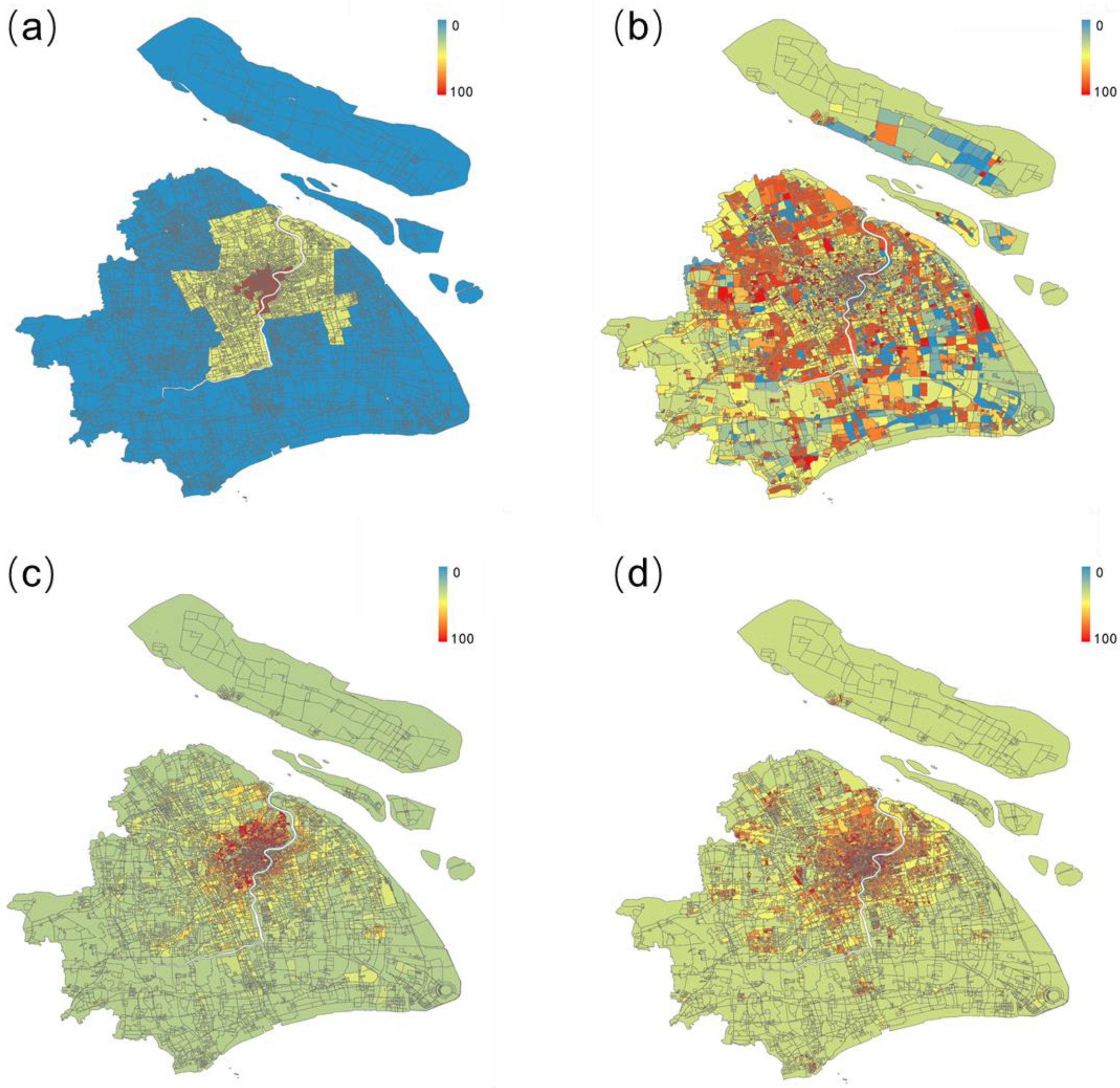
References
- Denney, D. Risk and Society; Sage: New York, NY, USA, 2005. [Google Scholar]
- Ailani, R.S.; Bhatt, J.D. Analysis of Fire Station Infrastructure using GIS and Planning Proposal: A Case of Surat City. Int. J. Mod. Dev. Eng. Sci. 2022, 1, 28–29. [Google Scholar]
- Yao, J.; Zhang, X.; Murray, A.T. Location optimization of urban fire stations: Access and service coverage. Comput. Environ. Urban. Syst. 2019, 73, 184–190. [Google Scholar] [CrossRef]
- Celik Turkoglu, D.; Erol Genevois, M. A comparative survey of service facility location problems. Ann. Oper. Res. 2020, 292, 399–468. [Google Scholar] [CrossRef]
- Reilly, J.M.; Mirchandani, P.B. Development and application of a fire station placement model. Fire Technol. 1985, 21, 181–198. [Google Scholar] [CrossRef]
- Hakimi, S.L. Optimum locations of switching centers and the absolute centers and medians of a graph. Oper. Res. 1964, 12, 450–459. [Google Scholar] [CrossRef]
- Farahani, R.Z.; Asgari, N.; Heidari, N.; Hosseininia, M.; Goh, M. Covering problems in facility location: A review. Comput. Ind. Eng. 2012, 62, 368–407. [Google Scholar] [CrossRef]
- Toregas, C.; ReVelle, C. Optimal Location under Time or Distance Constraints; Papers of the Regional Science Association; Springer: Berlin/Heidelberg, Germany, 1972; Volume 28, pp. 131–143. [Google Scholar]
- Church, R.; ReVelle, C. The Maximal Covering Location Problem; Papers of the Regional Science Association; Springer: Berlin/Heidelberg, Germany, 1974; Volume 32, pp. 101–118. [Google Scholar]
- Çatay, B. Siting new fire stations in Istanbul: A risk-based optimization approach. OR Insight 2011, 24, 77–89. [Google Scholar] [CrossRef]
- Aktaş, E.; Özaydın, Ö.; Bozkaya, B.; Ülengin, F.; Önsel, Ş. Optimizing fire station locations for the Istanbul metropolitan municipality. Interfaces 2013, 43, 240–255. [Google Scholar] [CrossRef]
- Nyimbili, P.H.; Erden, T. GIS-based fuzzy multi-criteria approach for optimal site selection of fire stations in Istanbul, Turkey. Socioecon. Plann Sci. 2020, 71, 100860. [Google Scholar] [CrossRef]
- Murray, A.T.; Tong, D.; Grubesic, T.H. Spatial optimization: Expanding emergency services to address regional growth and development. In Studies in Applied Geography and Spatial Analysis: Addressing Real World Issues; Edward Elgar Publishing: Cheltenham, UK, 2012; p. 109. [Google Scholar]
- Murray, A.T. Optimising the spatial location of urban fire stations. Fire Saf. J. 2013, 62, 64–71. [Google Scholar] [CrossRef]
- Chevalier, P.; Thomas, I.; Geraets, D.; Goetghebeur, E.; Janssens, O.; Peeters, D.; Plastria, F. Locating fire stations: An integrated approach for Belgium. Socioecon. Plann Sci. 2012, 46, 173–182. [Google Scholar] [CrossRef]
- Wu, C.; Li, C.; Ouyang, L.; Xiao, H.; Wu, J.; Zhuang, M.; Bi, X.; Li, J.; Wang, C.; Song, C.; et al. Spatiotemporal evolution of urbanization and its implications to urban planning of the megacity, Shanghai, China. Landsc. Ecol. 2023, 38, 1105–1124. [Google Scholar] [CrossRef]
- Ming, J.; Richard, J.-P.P.; Qin, R.; Zhu, J. Distributionally robust optimization for fire station location under uncertainties. Sci. Rep. 2022, 12, 5394. [Google Scholar] [CrossRef]
- Jia, H.; Ordonez, F.; Dessouky, M.M. Solution approaches for facility location of medical supplies for large-scale emergencies. Comput. Ind. Eng. 2007, 52, 257–276. [Google Scholar] [CrossRef]
- Wan Jusoh, W.N.; Tharima, A.F.; Ghani, W.; Mohamad Lukman, N.H.; Visvasathan, S.; Shamsudin, M.H.; Mahmud Zuhudi, N.Z.; Mohd Nur, N. Initial assessment of fire response time between different categories of fire stations in Malaysia. Fire 2022, 6, 6. [Google Scholar] [CrossRef]
- Martín-Fernández, S.; Martínez-Falero, E.; Peribáñez, J.R.; Ezquerra, A. GIS-based simulated annealing algorithm for the optimum location of fire stations in the madrid region, Spain: Monitoring the collapse index. Appl. Sci. 2021, 11, 8414. [Google Scholar] [CrossRef]
- Anderson-Bell, J.; Schillaci, C.; Lipani, A. Predicting non-residential building fire risk using geospatial information and convolutional neural networks. Remote Sens. Appl. 2021, 21, 100470. [Google Scholar] [CrossRef]
- Silva, D.; Rodrigues, H.; Ferreira, T.M. Assessment and Mitigation of the Fire Vulnerability and Risk in the Historic City Centre of Aveiro, Portugal. Fire 2022, 5, 173. [Google Scholar] [CrossRef]
- Available online: https://www.mohurd.gov.cn/file/old/2017/20171017/W020171017021316.pdf (accessed on 1 January 2024).
- National Fire Protection Association (NFPA). NFPA 1710, Standard for the Organization and Deployment of Fire Suppression Operations, Emergency Medical Operations, and Special Operations to the Public by Career Fire Departments. Available online: https://www.nfpa.org/codes-and-standards/nfpa-1710-standard-development/1710?l=124 (accessed on 1 January 2024).
- Zolekar, R.B. Integrative approach of RS and GIS in characterization of land suitability for agriculture: A case study of Darna catchment. Arab. J. Geosci. 2018, 11, 780. [Google Scholar] [CrossRef]
- Dong, X.; Li, Y.; Pan, Y.; Huang, Y.; Cheng, X. Study on urban fire station planning based on fire risk assessment and GIS technology. Procedia Eng. 2018, 211, 124–130. [Google Scholar] [CrossRef]
- Lau, C.K.; Lai, K.K.; Lee, Y.P.; Du, J. Fire risk assessment with scoring system, using the support vector machine approach. Fire Saf. J. 2015, 78, 188–195. [Google Scholar] [CrossRef]
- Wang, Y.; Hou, L.; Li, M.; Zheng, R. A novel fire risk assessment approach for large-scale commercial and high-rise buildings based on fuzzy analytic hierarchy process (Fahp) and coupling revision. Int. J. Environ. Res. Public Health 2021, 18, 7187. [Google Scholar] [CrossRef] [PubMed]
- Available online: https://tjj.sh.gov.cn/tjnj/20230206/804acea250d44d2187f2e37d2e5d36ba.html (accessed on 1 January 2024).
- Chenyang, L.; Xinchun, W.; Chunzhen, H.; Xuan, W.; Zhaoyu, K.; Xiaolei, L. China national digital geological map (public version at 1, 200 000 Scale) spatial database. Geol. China 2019, 46, 1–10. [Google Scholar]
- Bixby, B. The gurobi optimizer. Transp. Res. Part B 2007, 41, 159–178. [Google Scholar]
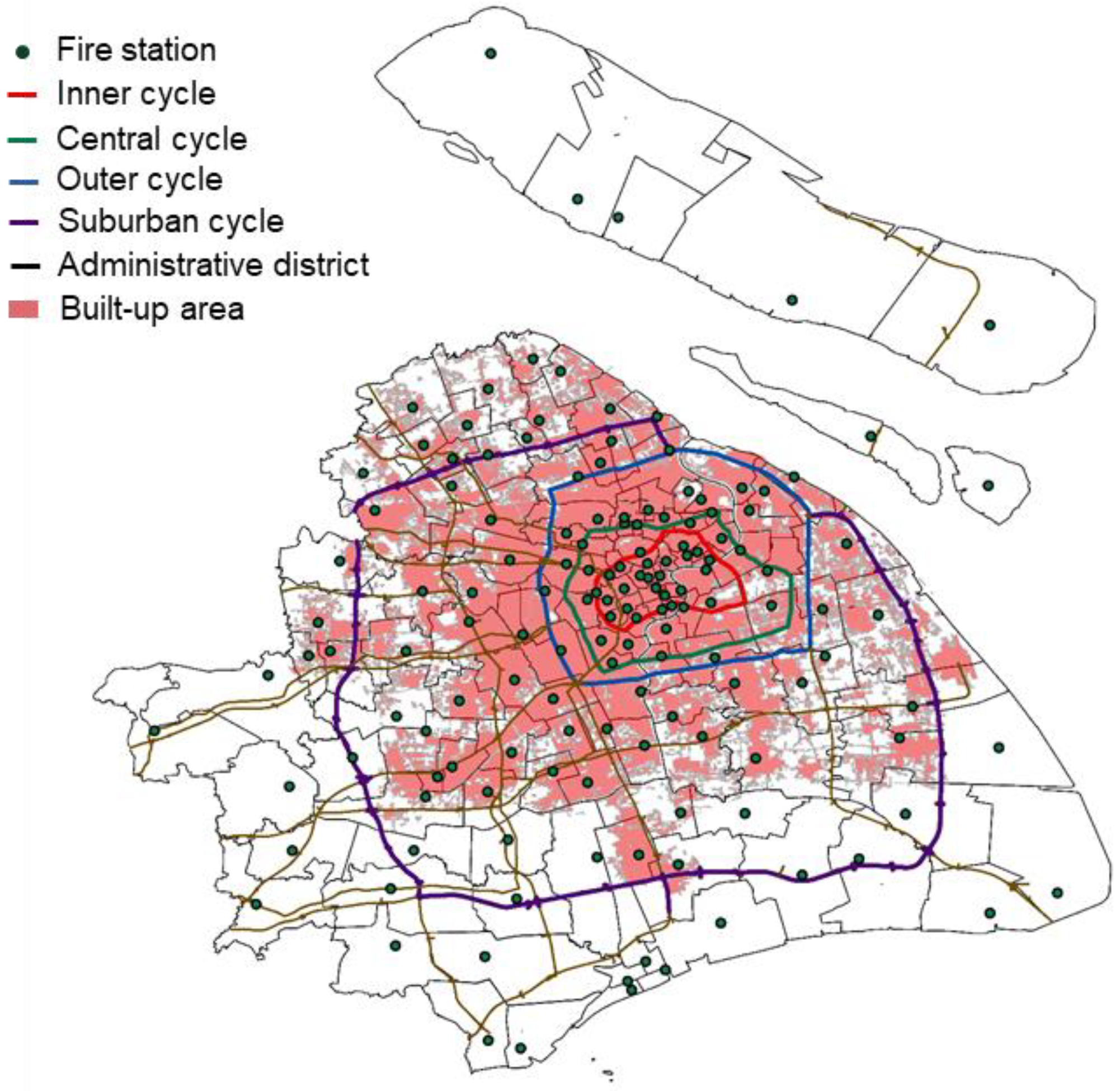
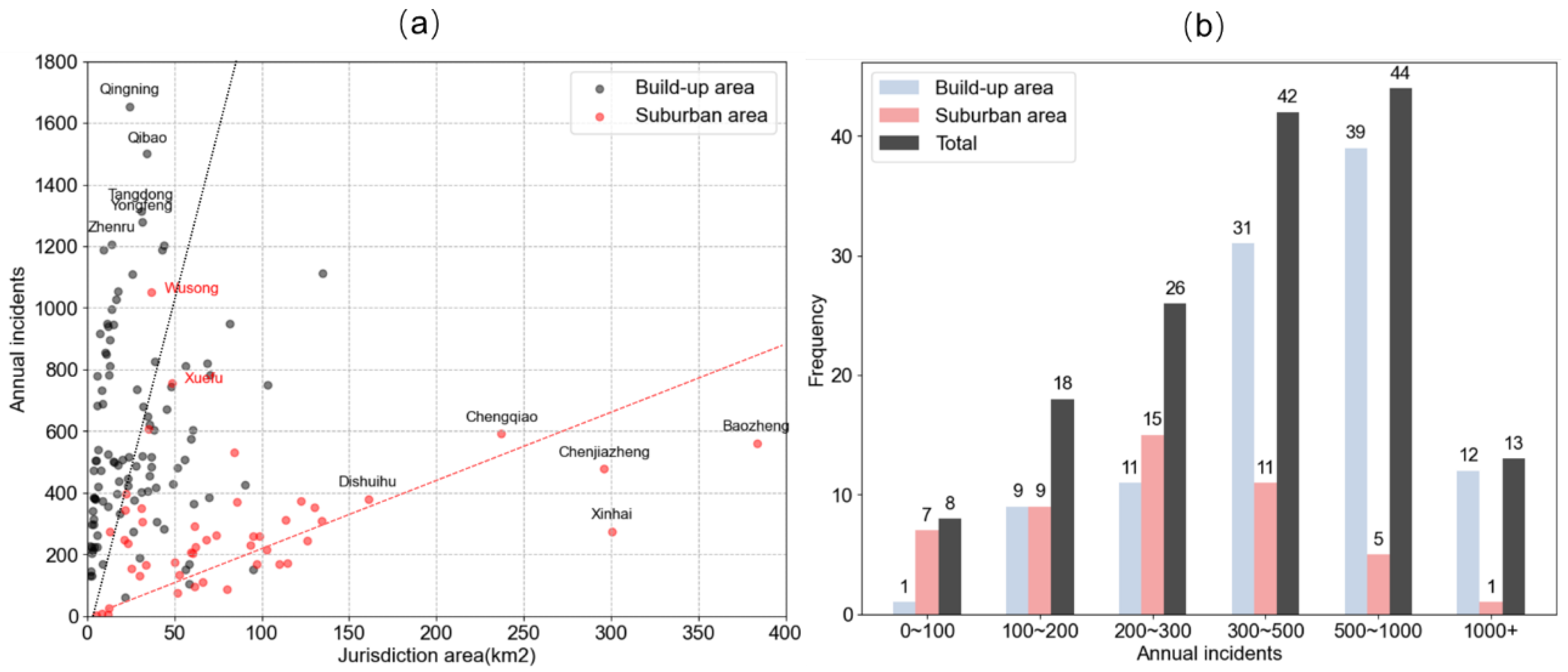
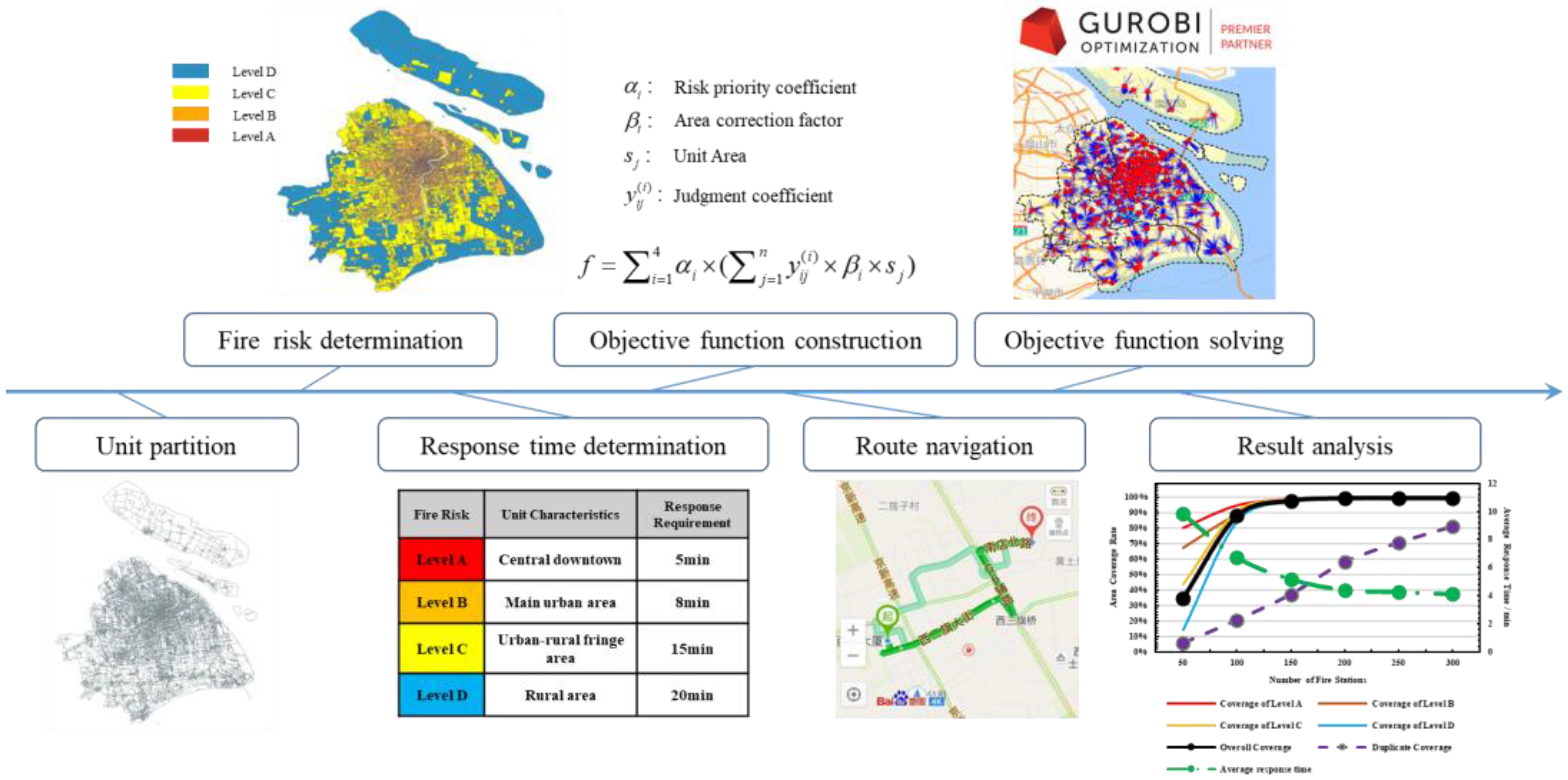
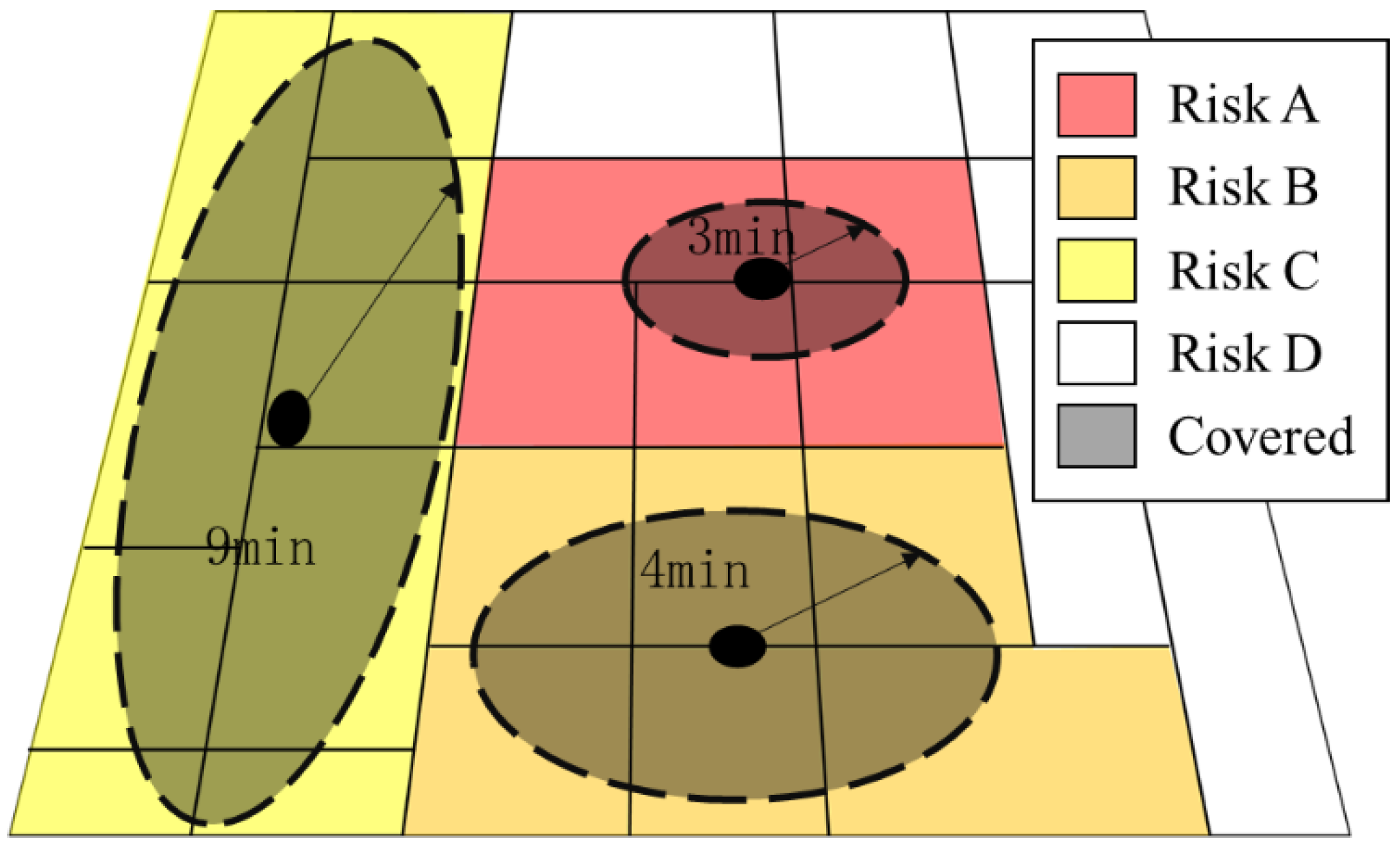

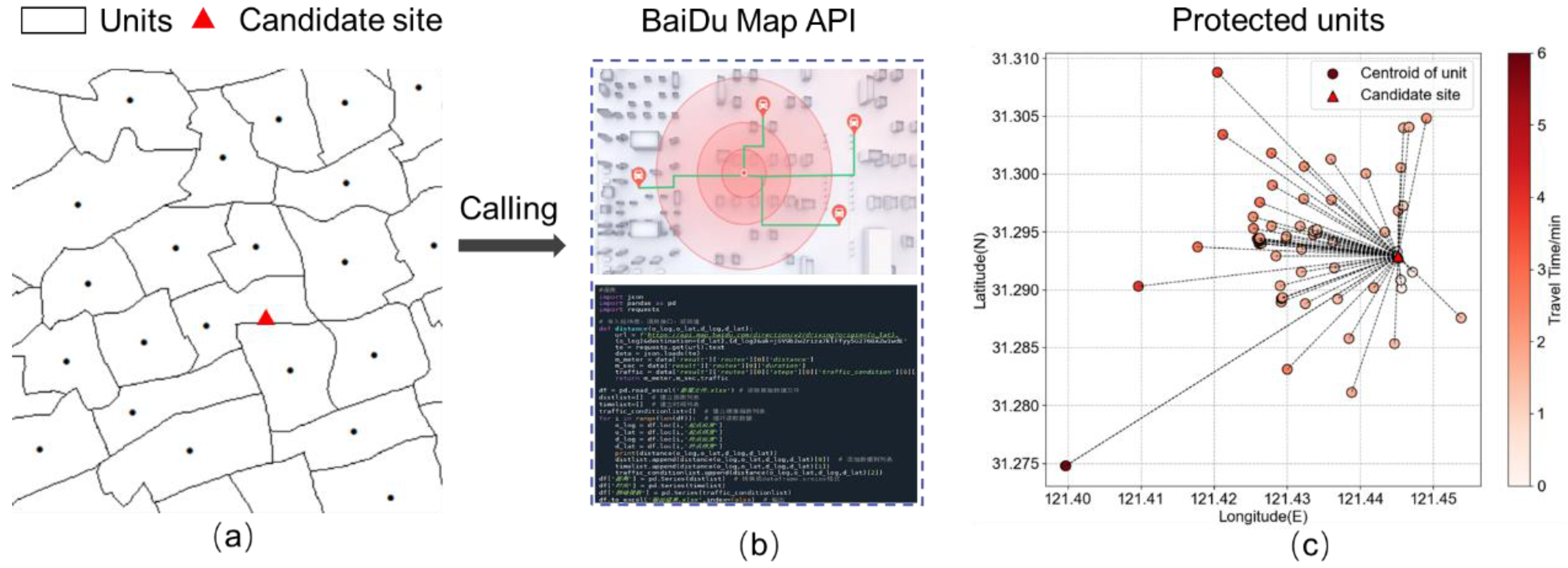
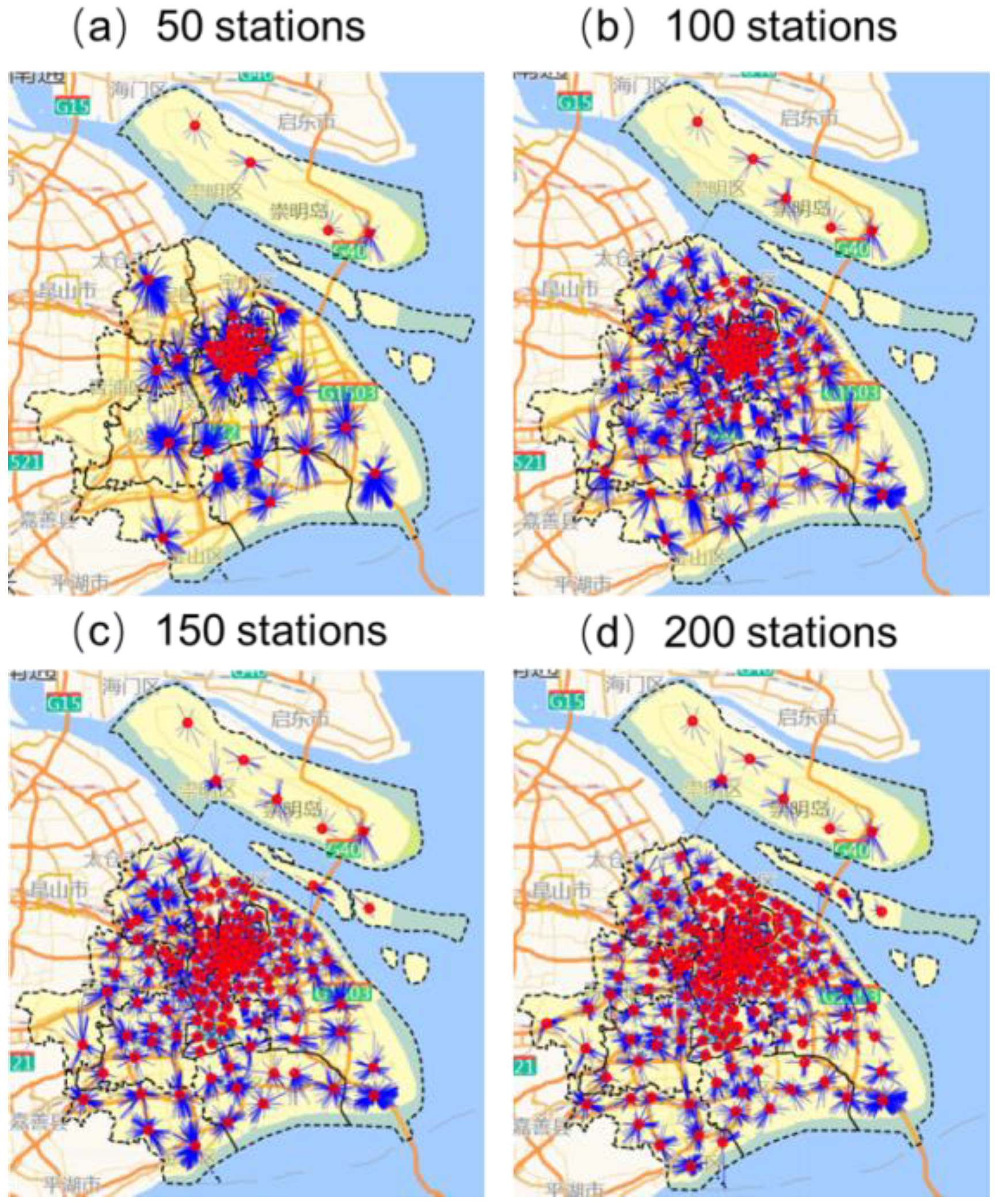
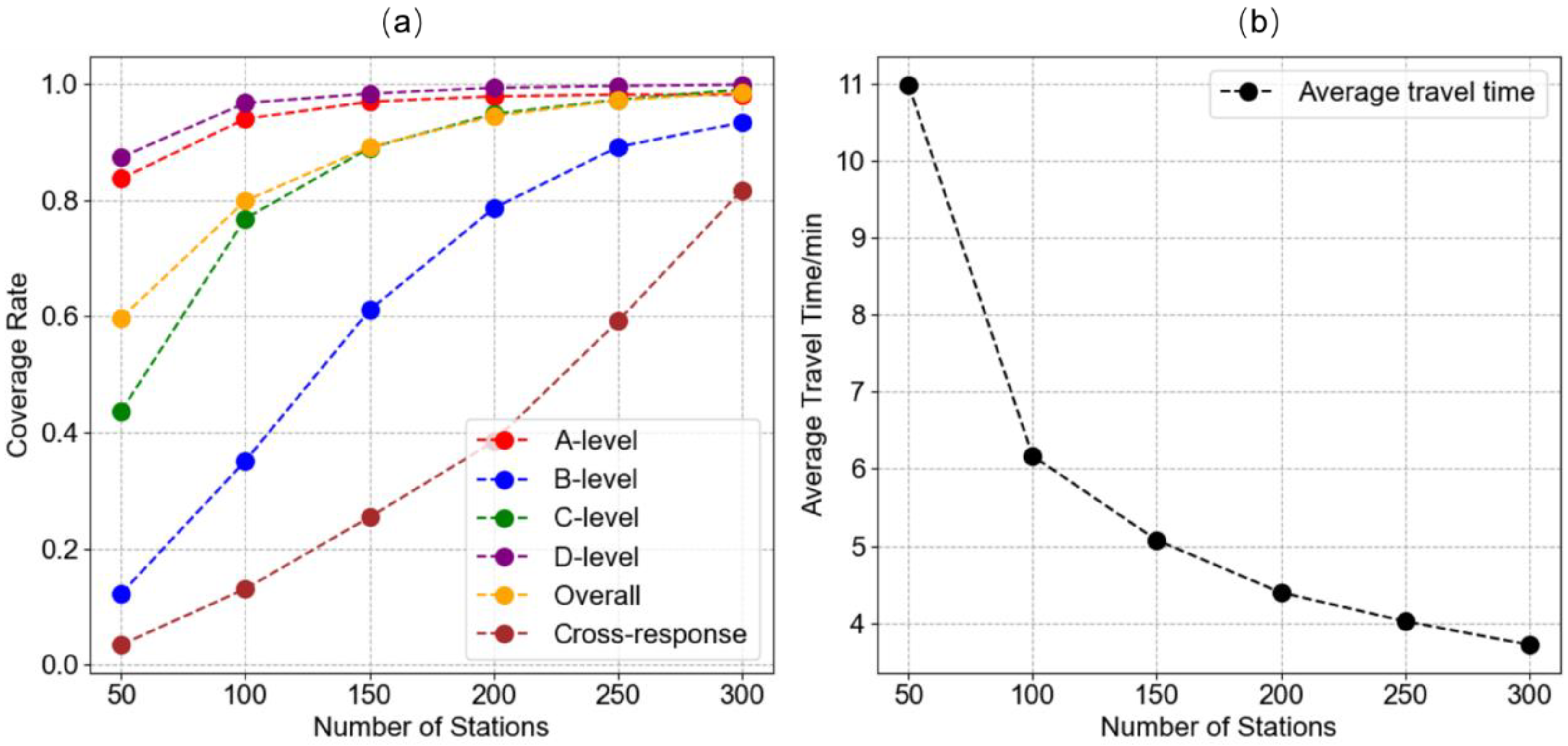

| Factors () | Indicator Name | Method of Calculation | Score Count () |
|---|---|---|---|
| A1 | Spatial location | Assigning a value of 100 to the central urban area, a value of 60 to the main urban area, and a value of 30 to other regions. | 0.12 |
| A2 | Land attributes | Current land use attributes (residential land assigned a value of 60, administrative office land assigned a value of 80, commercial service land assigned a value of 100, etc.). | 0.15 |
| A3 | Population density | Population within the jurisdiction divided by the total area of the region (in square kilometers). | 0.27 |
| A4 | Building volume ratio | Total area of above-ground buildings divided by total area of the region (in square kilometers). | 0.15 |
| A5 | GDP density | Total GDP of the region (in hundred million CNY) divided by the total area of the region (in square kilometers). | 0.10 |
| A6 | Incident density | Fire incident density within the region over 12 months. | 0.21 |
| Risk Classification | Travel Time (min) | Risk Classification (min) |
|---|---|---|
| A | 5 | 4 |
| B | 8 | 7 |
| C | 15 | 14 |
| D | 20 | 19 |
| Risk Classifications | Travel Time (min) | Area Proportion | Risk Classifications |
|---|---|---|---|
| A | 4 | 16 | 22.56 |
| B | 7 | 49 | 7.37 |
| C | 14 | 196 | 1.84 |
| D | 19 | 361 | 1.00 |
Disclaimer/Publisher’s Note: The statements, opinions and data contained in all publications are solely those of the individual author(s) and contributor(s) and not of MDPI and/or the editor(s). MDPI and/or the editor(s) disclaim responsibility for any injury to people or property resulting from any ideas, methods, instructions or products referred to in the content. |
© 2024 by the authors. Licensee MDPI, Basel, Switzerland. This article is an open access article distributed under the terms and conditions of the Creative Commons Attribution (CC BY) license (https://creativecommons.org/licenses/by/4.0/).
Share and Cite
He, Q.; Xue, L.; Yang, Y.; Ding, P.; Liu, M. Research on Chinese Fire Station Optimal Location Model Based on Fire Risk Statistics: Case Study in Shanghai. Appl. Sci. 2024, 14, 2052. https://doi.org/10.3390/app14052052
He Q, Xue L, Yang Y, Ding P, Liu M. Research on Chinese Fire Station Optimal Location Model Based on Fire Risk Statistics: Case Study in Shanghai. Applied Sciences. 2024; 14(5):2052. https://doi.org/10.3390/app14052052
Chicago/Turabian StyleHe, Qize, Lin Xue, Yun Yang, Pengfei Ding, and Min Liu. 2024. "Research on Chinese Fire Station Optimal Location Model Based on Fire Risk Statistics: Case Study in Shanghai" Applied Sciences 14, no. 5: 2052. https://doi.org/10.3390/app14052052
APA StyleHe, Q., Xue, L., Yang, Y., Ding, P., & Liu, M. (2024). Research on Chinese Fire Station Optimal Location Model Based on Fire Risk Statistics: Case Study in Shanghai. Applied Sciences, 14(5), 2052. https://doi.org/10.3390/app14052052






